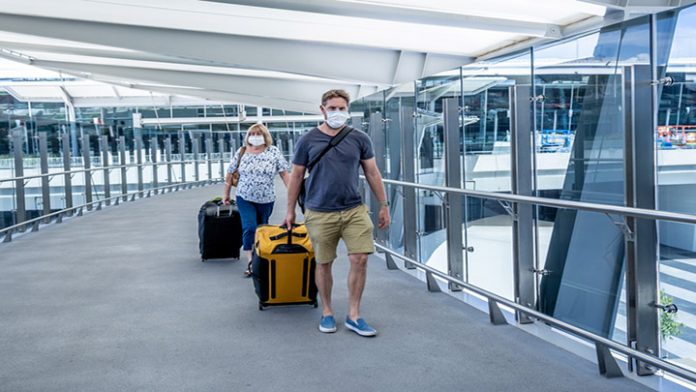The International Air Transport Association (IATA) has said it supports face masks and tests, but says social distancing would break airline finances. For international medical travel this could reduce travel destination options as airlines go bankrupt, or increase airfares by 50%, marking an end of the era of affordable travel.
IATA has said it supports the wearing of face coverings for passengers and masks for crew while on board aircraft as a critical part of a layered approach to biosecurity to be implemented temporarily when people return to traveling by air.
It does not however support mandating social distancing measures that would leave middle seats empty, saying that airlines have found that this is impractical, even if it were economically viable.
Calls for social distancing measures on aircraft would fundamentally shift the economics of aviation by slashing the maximum load factor to 62%. That is well below the average industry breakeven load factor of 77%.
With fewer seats to sell, unit costs would rise sharply. Compared to 2019, airfares would need to go up dramatically, between 43% and 54% depending on the region, just to break even. As some airlines were already struggling financially, despite record air travel numbers, many airlines could now go under.
IATA represents some 290 airlines comprising 82% of global air traffic. Airlines are fighting for their survival. Eliminating the middle seat will raise costs. If that can be offset with higher fares, the era of affordable travel will come to an end. On the other hand, if airlines can’t recoup the costs in higher fares, airlines will go bust.
Evidence suggests that the risk of transmission on board aircraft is low. Mask wearing by passengers and crew will reduce the already low risk, while avoiding the dramatic cost increases to air travel that on-board social distancing measures would bring.
Alexandre de Juniac of IATA explains; “The safety of passengers and crew is paramount. The aviation industry is working with governments to re-start flying when this can be done safely. Evidence suggests that the risk of transmission on board aircraft is low. And we will take measures, such as the wearing of face coverings by passengers and masks by crew, to add extra layers of protection. We must arrive at a solution that gives passengers the confidence to fly and keeps the cost of flying affordable. One without the other will have no lasting benefit.”
IATA recommends mandatory face-coverings for passengers and masks for crew as one of several actions to reduce the already low risk of contracting COVID-19 on board aircraft.
In addition to face coverings, the layers of temporary biosecurity measures being proposed include:
- Temperature screening of passengers, airport workers and travellers.
- Boarding and deplaning processes that reduce contact with other passengers or crew.
- Limiting movement within the cabin during flight.
- More frequent and deeper cabin cleaning.
- Simplified catering procedures that lower crew movement and interaction with passengers.
- When proven and available at scale, testing for COVID-19 or immunity passports could also be included as temporary biosecurity measures.
The long-term solutions for COVID-19 depend on medical science. IATA says, “We need a vaccine, an immunity passport or an effective COVID-19 test that can be administered at scale. Work on all of these is promising. But none will be realised before we will need to re-start the industry. So, we must be ready with a series of proven measures, the combination of which will reduce the already low risk of inflight transmission.”








 ©2024 All rights reserved LaingBuisson
©2024 All rights reserved LaingBuisson 


